
|   |

|   |
The exhilarating 'Bhumi Shaurya Veer Gatha' - Manjari Sinha e-mail: manjari@sinha.com Photos: Rahul Naag August 29, 2023 The Central Vista at India Gate, New Delhi, and its multiple performance stages are pulling enthusiastic crowds pouring in large numbers to watch cultural programs sponsored by the Ministry of Culture celebrating Azadi ka Amrit Mahotsav. 'Kalanjali' is one such series of cultural programs invoking the motherland with 'Vande Bharat', where the Yagna Performing Arts of Kuleshwar Kumar Thakur presented their powerful production 'Bhumi Shaurya Veer Gatha' recently. Kuleshwar is a versatile dancer and Yoga expert trained in Mayurbhanj Chhau and contemporary dances under Gurus like Janamejoy Sai Babu and Santosh Nair respectively. He is also one of the collaborative members of 'Rasa United,' an amalgamation of Kuchipudi, Chhau, and Bharatanatyam, created by Vanashree Rao. Kuleshwar and his institution Yagna Performing Arts combine a wide range of eclectic body movements from traditional, folk and martial arts to Yoga and Mayurbhanj Chhau and blend them all to create their own signature style. 'Bhumi Shaurya Veer Gatha' showcased his versatility as a dynamic dancer and imaginative choreographer. Chhau dance comes under martial and folk traditions. Its three styles are named after the regions they are practiced: Purulia of West Bengal, Seraikella from Jharkhand, and Mayurbhanj from Odisha. Chhau dance celebrates martial arts, acrobatic and athletic themes to a structured dance with ritualistic religious themes found in Shaiva, Shakt, and Vaishnava mythological stories. Purulia and Seraikella also use masks to identify the characters. Chhau dances are often based on stories from Ramayana, Mahabharata and other literature when performed during festivals, especially the spring festival, Chaitra Parva. 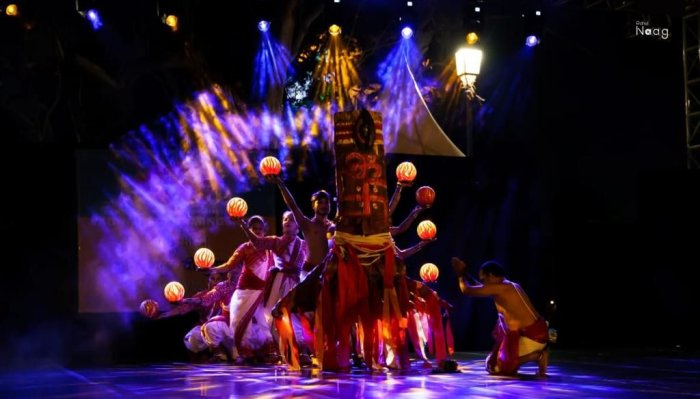 'Bhumi Shaurya Veer Gatha' was conceived and choreographed by Kuleshwar Thakur to showcase the rich tradition of Mayurbhanj Chhau, its history, tradition, and culture. Opening with an invocation to Kaal Bhairav, brought ceremoniously on the stage as a tall mask of the deity. The prayer "Namami Kaal Bhairavam" in the serene swaras of raga Bhairav, was accompanied by folk instruments like Chhau dhol, flute, and mahuri sounding like shehnai. The huge mask-like statue was placed in the 'Akhada' where after the ritualistic pooja or worship, physical exercises were taught and practiced to make the body supple for the dance. This was followed by the practice of Hathiyar-Dhara, the exercises to use the weapons, followed by the Yoga-based exercises like Trikonasana, Pada-Hastasana, Bhujangasana, Surya Namaskar, etc by a group of male and female dancers. Traditionally done only by male practitioners, this syncretic dance form is practiced nowadays by female dancers as well. If the male dancer's tandava ang was manifested in 'Paika', the contrasting lasya ang of the female dancers was revealed in 'Udan Chandi' which seemed inspired by the Gotipua dances. The Uphali movements, on the other hand, imitated the flight and movements of birds and animals like the bagula or crane, deer, and crocodile. This sequence underlined the secret of how much this dance has taken from nature! 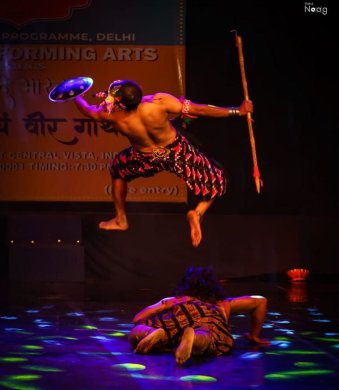 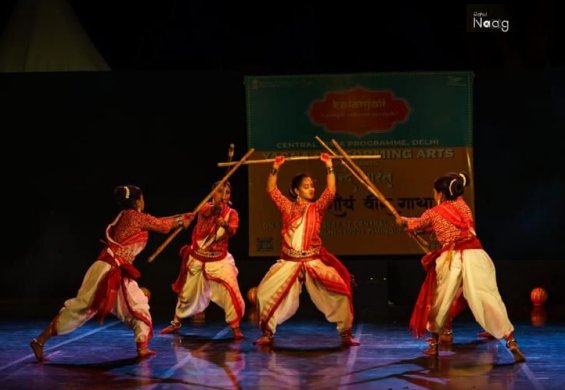 After showcasing these technical aspects of Mayurbhanj Chhau, the story-telling sequence began with the King walking in his royal attire and princely gait just after a drummer announces his order declaring that no animals will be hunted and killed in his kingdom. The dancers perform the Paika dance with sword and shield, bow and arrow in front of the king to welcome him. One could enjoy the typical 'Ruk Maar' technique in the movements of attack and defence using their weapons in Paika. 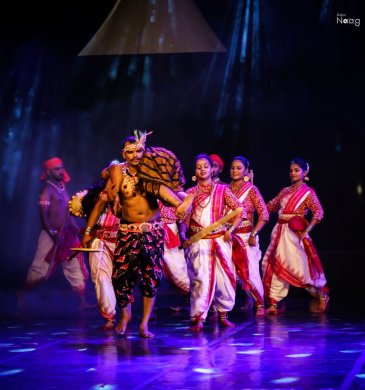 The scene changes and a lion appears attacking men and women in their village. To protect the villagers from the wild animal comes a Shabar, the hunter with his bow and arrow, challenging the wild animal. The costume, makeup, and the aggressive attacks of the animal felt so real with the sound effects that some of the small kids in the audience got frightened. Both, Kuleshwar as the Shabar and the dancer enacting the lion did a wonderful job of attacking each other furiously, and in the end, the hunter shoots the lion with his arrow. The triumphant Shabar takes away the killed prey followed by the whole tribe rejoicing with group dance that ended in an aesthetically impressive freeze of the whole group of dancers into a tableau. It was evident from the presentation of 'Bhumi Shaurya Veer Gatha' this evening that this dance form emerged from the fusion of classical, folk, and traditional dance of ancient regional tribes. Not just the dance but music and mask-making skills were also transmitted orally. Kudos to Kuleshwar and his Yagna Performing Arts for using all these skills so effectively. Right from the impressive beginning with the convincing image of Kaal Bhairav utilizing the skillful craft of mask making to the authentic music and musical instruments, the imaginative choreography incorporated Yogasanas to Mayurbhanj Chhau's typical Akhada exercises, Hathiyar Dhara, Topka, Udan Chandi, Uphlis, and Ruk Maar, martial arts movement. The credit for concept and choreography goes to Kuleshwar Kumar Thakur, music by Bidyadhar Sahu, costumes by Simran Gupta, ornaments by Neelu Kumari, lights by Atul Mishra; along with the well-trained male and female dancers like Simran, Ayushi, Jyoti, Soumli Haldar, Seema, Sanidhya, Arjun Dev, Prabhakar, Deepak Kandari, Mahesh, Rohit, Sumit Mandal, Jai Singh, Moon Khan, Anmol Tyagi, and Ankit Pal. 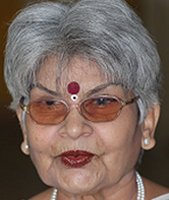 Manjari Sinha has an M.A. in Sanskrit and Music, and trained in vocal, tabla, sitar and Kathak dance. She has regular columns in national dailies as a music and dance critic. |